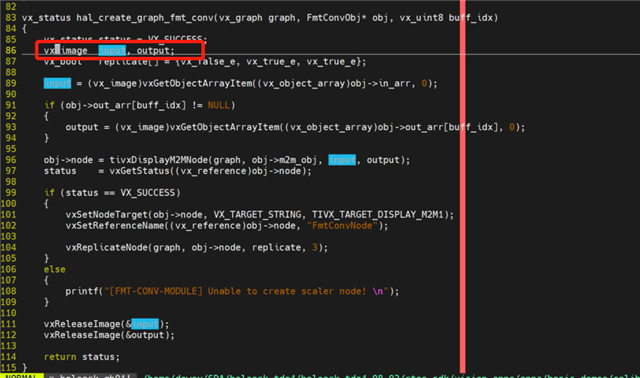Hello, TI-experts
On our current project, we need to crop the images that come in from the camera-sensor. The PSDK version we are currently based on is 8.2. May I ask if there are any hardware module based cropping usecase on TDA4. I can follow the the usecase of croping for adding the croping-node in my graph of openVX.
My graph is capture(1920*1536, uyvy) -> scaler(1280*800,nv12) -> display.
The project is quite urgent. Could you please support me, Thank you.



